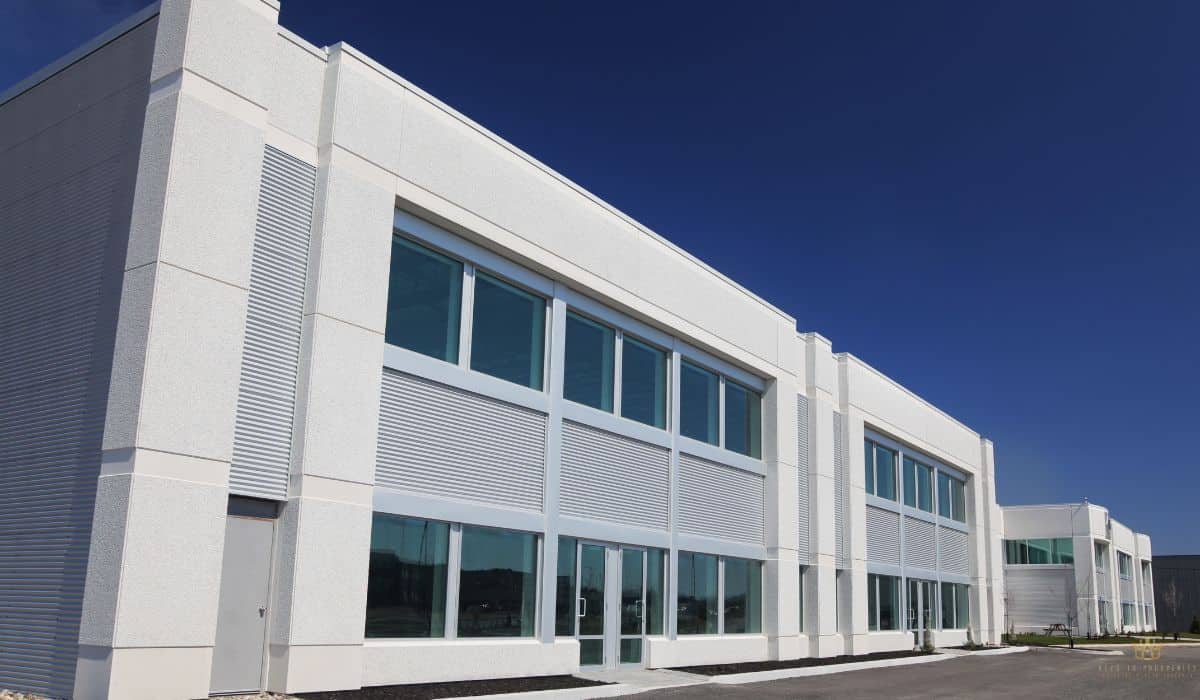
A simple truth in commercial real estate today is that most investors struggle with accurate property valuations.
Here’s something exciting: recent industry surveys show that more than two-thirds of CRE professionals anticipate significant market improvements in 2025, particularly in areas like property prices, transaction volume, and rental income.
From our experience analyzing hundreds of properties, successful cap rate analysis in commercial real estate makes the difference between a good deal and a great investment.
However, cap rates are just one piece of the puzzle: understanding commercial property valuation methods gives you a broader perspective on assessing a property’s true worth, which is the topic of our next article.
If you’re looking for a step-by-step breakdown of how to analyze a commercial property beyond cap rates, we’ve got you covered with expert insights on market trends, financial metrics, and risk assessment.
This guide breaks down everything about capitalization rates, from basic calculations to advanced interpretation strategies.
We’ll show you exactly how to evaluate commercial properties using proven cap rate methods, understand market conditions, and make confident investment decisions. Perfect for both seasoned real estate investors and those just starting their CRE journey!
Short Summary
- Cap rate analysis in commercial real estate helps investors assess a property’s profitability and potential return.
- The cap rate formula divides the property’s net operating income by the purchase price or current market value.
- Understanding capitalization rates can guide decisions on commercial real estate investments by showing the relationship between property value and risk.
- Accurate analysis requires collecting reliable data on net operating income, operating expenses, property taxes, and market conditions.
- Advanced techniques like risk adjustments, market comparisons, and cap rate trends help refine evaluations and support strategic investment decisions.
Understanding Cap Rate Analysis Fundamentals
Capitalization rates might sound technical, but they’re really just a simple tool we use to measure risk and return in commercial real estate. Investors, analysts, and commercial brokers rely on cap rate analysis in commercial real estate every day to compare investment property options and gauge property value potential.
So, what exactly is a cap rate? It’s a percentage that shows the relationship between a property’s net operating income and its current market value. Think of it as a quick snapshot of how much income a property is expected to generate relative to its price.
Here’s the basic cap rate formula:
Cap Rate = Net Operating Income ÷ Purchase Price (or Current Market Value)
Let’s work this out with an example.
A commercial property generates $100,000 in net operating income annually and it has a purchase price of $1,250,000. Plug those numbers into the cap rate formula:
Cap Rate = $100,000 ÷ $1,250,000 = 0.08 (or 8%)
That’s it. An 8% cap rate. This means the investment property is expected to yield an 8% return based on its annual income generated before financing costs.
Now, it’s not just about doing the math. Understanding how cap rates and property values interact is what really helps us make smart decisions.
- Lower cap rates often mean property prices are high, or the asset is seen as lower risk.
- Higher cap rates can signal higher risk or a lower asset value.
We’ve noticed that commercial real estate investors keep a close eye on average cap rates across different property types. This helps them understand what’s reasonable in a particular market.
Industry Benchmarks To Know:
Cap rates vary depending on market conditions, location, and asset class. Here are some rough standards we often see:
- Multifamily properties: 4% – 6%
- Office buildings: 5% – 8%
- Retail spaces: 5% – 9%
- Industrial properties: 6% – 8%
These numbers shift based on the local market and broader real estate market trends. A hot city may see lower cap rates, while a struggling area might show higher cap rates. In other words, these are approximate ranges and can vary substantially.
What Influences Cap Rates?
Several factors push cap rates up or down. We’ve learned to look at these closely before jumping into any deal:
- Property’s income potential – Strong rental income often lowers both the cap rate and perceived risk.
- Operating expenses – High maintenance costs and rising property taxes can shrink net operating income NOI, pushing cap rates higher.
- Interest rates – When borrowing gets expensive, property prices can drop, raising cap rates.
- Market conditions – A competitive same market with few vacancies tends to bring lower cap rates.
- Other factors – Location, tenant stability, and the property’s age can all influence cap rates.
Understanding these fundamentals gives us the confidence to spot fair deals and avoid overpaying. The goal is to balance more risk with reward, so commercial real estate investments align with long-term goals.
How To Do Cap Rate Analysis In Commercial Real Estate
Running a cap rate analysis in commercial real estate may sound complicated, but it doesn’t have to be. Once you know the steps, it becomes second nature. Getting it right, though, depends on gathering the right numbers, using reliable tools, and avoiding a few common mistakes along the way.
Step-by-Step Cap Rate Calculation Process
The math itself is straightforward. Here’s how we usually approach it:
Step 1. Determine the Property’s Net Operating Income (NOI):
Start by adding up the rental income and any other annual income generated by the investment property.
Subtract operating expenses like property taxes, maintenance costs, and utilities. Leave out mortgage payments.
The result is your net operating income.
Step 2. Find the Property’s Current Market Value:
You can use the purchase price if it’s a recent sale.
Otherwise, look at comparable properties or an estimated market value from a trusted appraiser.
Step 3. Plug the Numbers into the Cap Rate Formula:
Cap Rate = Net Operating Income ÷ Current Market Value
For example, if the property’s net operating income is $75,000, and the current market value is $1,000,000, your cap rate is 7.5%.
This formula works across different commercial properties, whether it’s office buildings, multifamily properties, or retail spaces. We use it to check if a deal matches our investment relative to the risk we’re willing to take.
What Financial Data Do You Need?
Cap rate calculations are only as good as the numbers behind them. Collecting accurate data is the first step:
- Rental income records and lease agreements.
- Operating expenses, including property taxes, insurance, and maintenance costs.
- Utility bills and management fees.
- Any extra property’s income from parking, signage, or storage units.
- A recent current market value or purchase price.
Sometimes, getting this data means talking to the seller, reviewing statements, or checking the same property’s records over time. We always double-check because small errors can throw off the whole cap rate calculations.

Mistakes That Can Ruin Your Cap Rate Analysis
We’ve all made mistakes when we were starting out. Here are a few we learned to avoid:
- Forgetting operating expenses – Skipping costs like repairs or property taxes leads to inflated net operating income NOI.
- Using outdated market values – Market conditions shift, and relying on old sales data can misrepresent the property value.
- Mixing financing with NOI – Mortgage payments don’t belong in the NOI calculation.
- Overestimating rental income – If the property generates less than expected, your cap rate represents a riskier deal than you thought.
Tools That Help With Cap Rate Analysis
Manually crunching numbers works, but we like using tools to speed things up and catch errors. Here are a few options:
- Cap rate calculators available online.
- Excel spreadsheets with built-in formulas.
- Real estate investment software designed for commercial real deals.
These help us quickly compare different properties and see how adjustments to operating costs or property prices affect the cap rate.
Verifying Data – Don’t Skip This Step
We’ve seen deals fall apart because of bad info. Before trusting any number:
- Ask for supporting documents like rent rolls and expense statements.
- Compare estimates with comparable properties in the same market.
- Speak with other real estate investors familiar with local market conditions.
Trust, but verify. That’s how we protect our initial investment and make sure the cap rate formula gives us a clear picture.
Advanced Cap Rate Analysis Techniques
Once the basics are clear, it helps to step up your approach. Cap rate analysis in commercial real estate is a great starting point, but it gets even better when you layer in a few advanced techniques. These methods give a sharper view of a property’s potential and help reduce risk.
Market Comparison Analysis Methods
Comparing cap rates across different properties is something we do all the time. It’s a quick way to check if an investment property is priced reasonably compared to similar properties in the area.
Here’s how we break it down:
- Start with comparable properties in the same property class, like office buildings, retail spaces, or multifamily properties.
- Focus on recent sales. Data older than a few months can be misleading.
- Check local market conditions. Cap rate trends can vary by neighborhood.
- Look at vacancy rates and rental growth potential in the area.
Often, we compare cap rate calculations from multiple deals before deciding. A property with a lower cap rate than others might mean lower risk but also lower returns. If it’s higher than average, we ask why. Sometimes it’s a great deal, other times it signals problems.
Risk Assessment And Adjustment Factors
Every deal carries some level of risk. We adjust cap rate expectations based on factors like:
- Tenant quality – Long-term leases with reputable tenants reduce risk.
- Lease terms – Properties with short leases or month-to-month tenants can be riskier.
- Property age and condition – Older buildings often come with higher maintenance costs.
- Local economic conditions – Areas with high unemployment or slow growth can affect property values.
These risks impact cap rate analysis in commercial real estate more than many realize. Sometimes we’ll expect a higher cap rate to compensate for uncertainty. Other times, we accept a lower cap rate because the property’s income stream feels rock solid.

Property-Specific Considerations
No two commercial properties are identical. We always look at unique property details before finalizing a deal.
- Operating expenses – Some buildings are just expensive to run.
- Capital improvements needed – Roof repairs or system upgrades can hit hard.
- Special use properties – Hotels, gas stations, or medical buildings often operate differently from standard investment properties.
Even when two buildings look similar, these details can shift the cap rate represents in surprising ways.
Tracking Cap Rate Trends And Forecasting
We keep an eye on cap rate trends because they signal market conditions. In the past year, we’ve seen shifts due to interest rates, capital availability, and property demand.
Key things we watch:
- Cap rate trends in specific sectors—multifamily properties often behave differently than office buildings.
- Economic shifts—Rental growth and vacancy rates can quickly change cap rate expectations.
- Investor sentiment—More buyers chasing deals can lower cap rates, even if rental income stays flat.
Forecasting is tricky, but we use local market data and historical cap rates to get a rough idea. From our experience, trusting the data always works better than guessing.
Alternative Valuation Metrics To Complement Cap Rates
Cap rate analysis in commercial real estate is powerful, but it’s not the whole story. We often combine it with other valuation methods:
- Cash-on-cash return – Measures the annual return on cash invested.
- Gross rent multiplier (GRM) – Compares purchase price to gross rental income.
- Discounted cash flow (DCF) – Estimates future property cash flow and present value.
Each method highlights different angles. We find using cap rate calculations alongside these helps us see both immediate returns and long-term potential more clearly.
Blending these advanced techniques gives us confidence when evaluating commercial properties. It helps us avoid surprises and spot opportunities others might miss.
Applying Cap Rate Analysis To Investment Decisions
Knowing cap rate analysis in commercial real estate is one thing. Putting it to work when making investment decisions is where it really pays off.
Aligning Cap Rate Analysis With Your Investment Strategy
Every investor approaches commercial properties differently. Some look for high cash flow right away. Others focus on long-term appreciation.
Cap rate calculations help match the deal with your strategy:
- Higher cap rates often work better for cash flow-focused investors.
- Lower cap rates can still make sense if you’re betting on property value growth.
- Stabilized cap rates tell us what a property could produce after improvements.
We’ve found that reviewing cap rate expectations alongside your goals keeps everything balanced.
Using Cap Rate Analysis For Deal Evaluation
Numbers are one thing, but context is everything. Cap rate analysis in commercial real estate helps frame the deal, but we never stop there.
This is our basic deal-check routine:
- Evaluate cap rates from comparable sales in the area.
- Review the property’s operating expenses to ensure realistic income projections.
- Assess property condition – will it need capital improvements soon?
- Consider market conditions – is the area seeing rental growth or rising vacancy rates?
Each check gives us more confidence before making an offer.
Making Go/No-Go Decisions With Cap Rate Analysis
It’s not always easy to walk away from a deal. But cap rate calculations often make the call clearer.
If a property’s cap rate represents too little return compared to risk, it’s usually a “no.” If it fits our cap rate expectations and overall strategy, we move forward.
A few red flags that usually stop us:
- Cap rate is much lower than similar properties nearby, with no clear reason.
- Operating expenses seem underestimated.
- Rental income looks inflated compared to market rates.
When we see these, it’s often better to move on.

Using Cap Rate Analysis For Negotiation
We’ve used cap rate analysis in commercial real estate to negotiate better deals more times than we can count. Sellers love their properties. Buyers love fair prices.
These negotiation leverage points come up often:
- Pointing out a high cap rate compared to market norms to push for a lower price.
- Highlighting deferred maintenance costs that will affect property cash flow.
- Showing local cap rate trends to support your offer.
Sellers respect data. We bring cap rate calculations and numbers to every discussion.
Optimizing Your Portfolio With Cap Rate Analysis
Growing a portfolio gets easier with cap rate analysis in your toolkit. It helps balance cash flow properties with appreciation-focused investments.
What we check when optimizing:
- Cap rate expectations for each property to ensure income diversification.
- Market shifts – is an area’s cap rate trending up or down?
- Potential sales – selling a low cap rate property can free up cash for better opportunities.
We’ve seen portfolios thrive when investors consistently use cap rate analysis in commercial real estate to guide decisions.
It’s not just about buying. it’s about buying smart.
Final Thoughts
Cap rates might seem like just another set of numbers, but they can be the difference between a solid investment and a costly mistake.
Taking the time to understand cap rate analysis in commercial real estate helps us make better choices, move faster on good deals, and avoid the ones that don’t add up. It doesn’t need to be complicated, just consistent.
If you’re ready to sharpen your cap rate analysis skills or need help reviewing a potential deal, reach out to us today.
Frequently Asked Questions
What Is A Good Cap Rate For Commercial Properties?
A good cap rate depends on the property type and local market. Generally, lower cap rates suggest lower risk, while higher cap rates can mean higher risk but also more potential return.
How Do You Calculate A Property’s Cap Rate?
Use the cap rate formula: property’s net operating income (NOI) divided by the property’s purchase price or current market value. This simple calculation helps estimate a property’s potential return.
Why Do Cap Rates Vary Between Different Properties?
Cap rates fluctuate based on property type, location, market conditions, property’s income, and perceived risk. A stable office building may have a lower cap rate than a rental property in a developing area.
How Does Net Operating Income (Noi) Impact Cap Rate Analysis?
Net operating income NOI is the backbone of cap rate analysis. Strong cash flow and controlled operating expenses can increase NOI, boosting the property value and influencing cap rate calculations.






